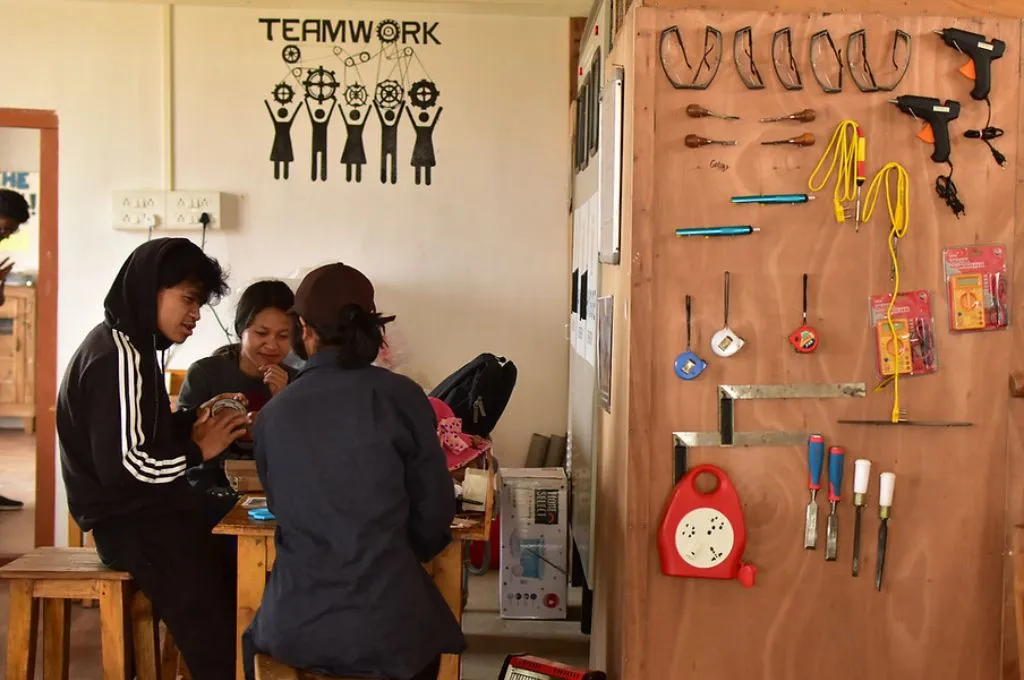There is no rulebook. There are no evidence-backed best practices on what works. If you are a nonprofit partnering with the government, the only thing that is certain, ironically, is the promise of uncertainty.
We learned this early on when the organisation I work for, Centre for Catalyzing Change (C3), joined hands with state governments to run programmes aimed at empowering adolescent girls. We knew that because the government plays an important role in scaling impact, understanding how to navigate the system effectively becomes crucial for any organisation doing development work.
In this two-part series, I highlight the lessons we have learned from engaging with the government over the past two decades. While they’re not formulaic, they might offer ideas for other organisations to adopt or build upon.

What you need to do before you engage with the government
If there were three P’s to working with the government, they would be patience, persistence, and preparation. You need all in equal measure to set the stage for a successful, long-term partnership.
This involves recognising when and how your organisation’s priorities might align with those of the government. For instance, the current government’s focus on improving employability in the country has dramatically expanded partnership opportunities for organisations working on skill development. In fact, even if you are a nonprofit working towards the empowerment of adolescent girls through imparting life skills such as negotiation and resilience, you could make the case that your work enhances the employability of these girls. What matters is the overlap between your outcomes and those that the government seeks to achieve.
Related article: The government as a partner: Making it work
Timing matters too. There is no predicting how long or how soon an agreement will be signed and sealed. Sometimes your proposal may sit on various tables and your project may get delayed getting off the ground. At other times, unexpected exigencies lead to things moving very quickly.
Recently, the review of a national flagship programme in a state revealed little progress for two years straight. This led to a discussion on strategies to catch up, which presented opportunities to work with nonprofits. Agreements were signed with nonprofits very quickly. Thus, while it is impossible to predict the timeline for the government signing an agreement—it could take weeks, months, or years—sometimes such developments can crunch the timeline.
You need to know which state and national policies support the need for your intervention. Like many of our peers, we make sure that any document, presentation or conversation we have, begins with a mention of all the relevant policies; this sets the context for the intervention we are proposing. It also adds credibility and relevance to our work, as it establishes that it is aligned with national priorities. And finally, stating plainly how our intervention contributes to the local or state government’s fulfillment of its mandate builds a stronger case overall.
No government official will consider your proposal in the absence of evidence—ideally from India—supporting your intervention. So never approach the government with an unproven model. A government’s investment in a particular programme has massive implications, and we should be careful not to lead them up a path that is not backed with evidence. The good news, especially for smaller nonprofits, is that you need not bank on your own evidence alone. You can scout around for evidence generated by your peers.
Never approach the government with an unproven model.
One can also approach the government to generate a second level of evidence. For example, C3 recently concluded a research project with Population Council, which aimed at leveraging existing structures and platforms to prevent violence against women and girls. There is evidence that working with men and boys or women’s groups does lead to reduction of violence. We presented that evidence to the government to emphasise that the model works; we also said that new evidence needs to be generated to evaluate if such models can deliver outcomes through government systems such as health workers or self-help groups. Articulating the rationale and the additional value this programme could bring made a huge difference.
Make sure you have done all the necessary research before you walk into a department or a room ready to propose a partnership. Since there are often so many factors that play a role in securing a government partnership, at C3 we make sure we cover all our bases before going into a meeting. It’s important to plan meticulously, researching the department’s priorities, and scrutinising their publicly stated priorities. Because so little of this process is within our control, as nonprofits we must attempt to make the most of what is.
Assess your capacities, restrict your geographies.
Nonprofits are often berated for promising too much and failing to deliver. So, make sure you deliver what you promise. Assess your capacities, restrict your geographies. Often, it is smarter to do multiple programmes with different departments in the same geography–this helps you build relationships as you do end up working with the same officers who, despite rotations across departments, remain in the state. Further, given the general climate of distrust towards nonprofits, it helps if your nonprofit has earned the government’s trust and has a work history with them or within that geography. Being invited to be a part of technical assistance groups and such other state government advisory roles indicates your nonprofit’s acceptance by the system.
These are the areas you must pay attention to before you start working with the government. Agreed, they are not easy. But if we want to work and impact at scale, the best way to do so is to collaborate with the government.





